Example 1 – Find and Replace a Word from a List with Excel Macro
In the following dataset, we want to find the product Cable and replace it with TV.
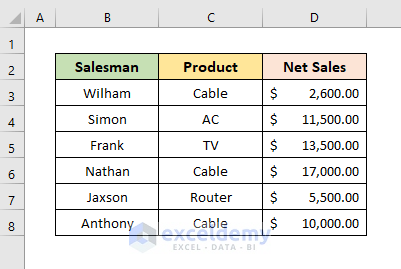
STEPS:
- Right-click on the sheet name at the bottom.
- Select View Code.
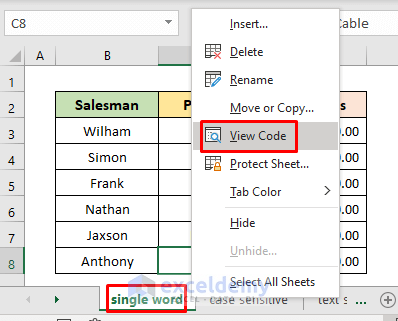
- The VBA window will pop out with an empty code box.
- Copy the following code and paste it into the box.
Sub Replace_Word()
Range("B3:D8").Replace What:="Cable", Replacement:="TV"
End Sub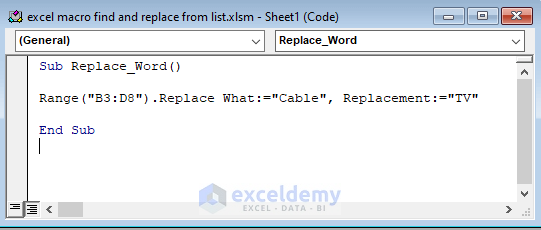
- Press F5. The Macros dialog box will pop out.
- Select Replace_Word and press Run.
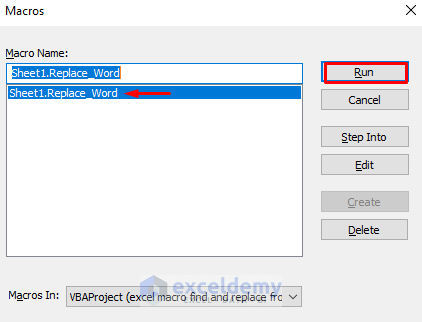
- Close the VBA window and you’ll see the product TV in the places of Cable.
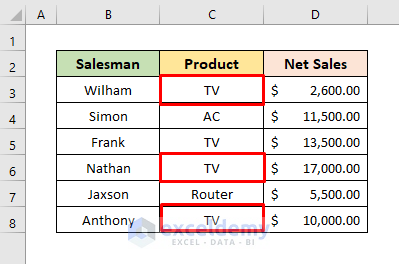
Read More: How to Find and Replace Using VBA
Example 2 – Apply Macro for Case-Sensitive Replacement from a List in Excel
The following dataset contains product Tv and we want it to replace it with TV.
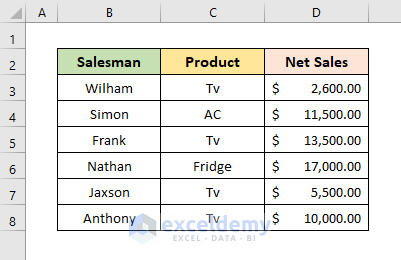
STEPS:
- Right-click on the sheet name.
- Select View Code.
- Copy the given code and paste it into the code box that opened.
Sub Replace_CaseSensitive()
Range("B3:D8").Replace What:="Tv", Replacement:="TV", MatchCase:=True
End Sub
- Press F5. The Macros dialog box will pop out.
- Select Replace_CaseSensitive in the Macro Name and press Run.
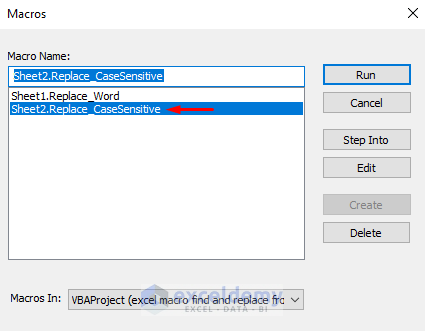
- Close the VBA window and you’ll see the desired changes.
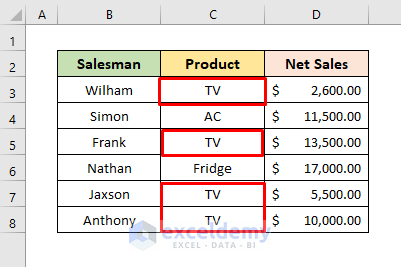
Example 3 – Use the Macro Replace Function for Finding and Replacing Text within a Text String
We want to replace Text present in a Text String. There are 3 text strings. We want to insert a space between the text MyMicrosoft.
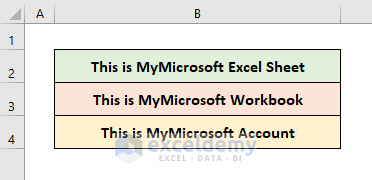
STEPS:
- Right-click on the sheet name.
- Select View Code.
- Copy and paste the code given below in the code box.
Sub TextString_Replace()
UsedRange.Replace What:="MyMicrosoft", Replacement:="My Microsoft"
End Sub
- Press F5.
- Close the VBA window.
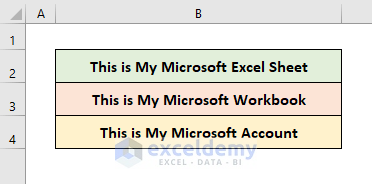
Example 4 – Find and Replace Multiple Values from a List with a Macro in Excel
The below dataset has a column Product and we want to replace the values in it with the column Replace with.
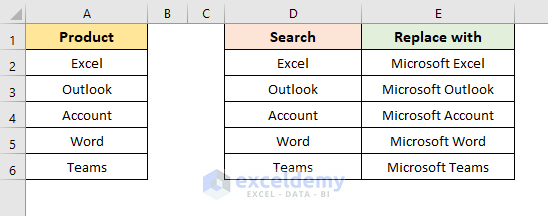
STEPS:
- Go to View Code.
- The VBA window will pop out and a code box will appear.
- Copy the below code and paste it into the box.
Sub Replace_MultiValues()
Dim R As Range
Dim InputR As Range, ReplaceR As Range
xTitleId = "Choose Range"
Set InputR = Application.Selection
Set InputR = Application.InputBox("Old ", xTitleId, InputR.Address, Type:=8)
Set ReplaceR = Application.InputBox("New :", xTitleId, Type:=8)
Application.ScreenUpdating = False
For Each R In ReplaceR.Columns(1).Cells
InputR.Replace What:=R.Value, Replacement:=R.Offset(0, 1).Value
Next
Application.ScreenUpdating = True
End Sub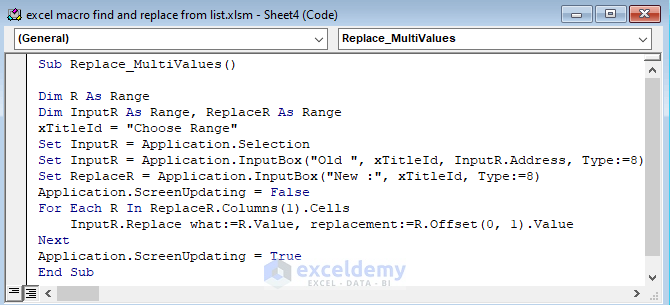
- After that, close the VBA window.
- Now, select Macros from the Developer tab.

- The Macros dialog box will appear.
- Select Replace_MultiValues in the Macro name and press Run.
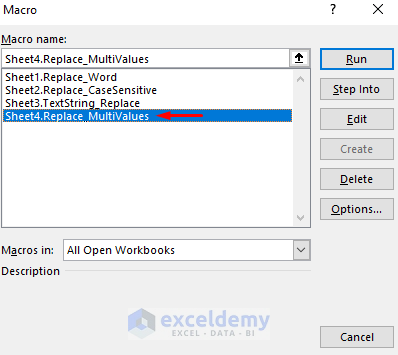
- The Choose Range dialog box will appear.
- Select $A$2:$A$6 in the Old box and press OK.
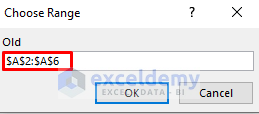
- Another dialog box will appear. Select $D$2:$E$6 in the New field and press OK.
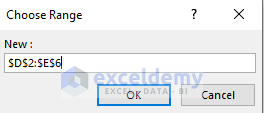
- We’ll get the Product column according to our requirements.
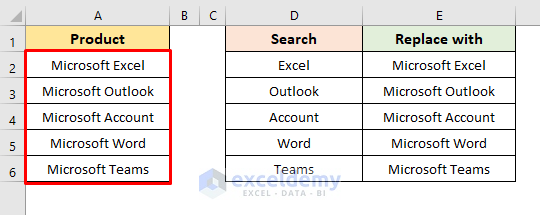
Example 5 – Find and Replace Throughout the Entire Workbook in Excel with Macro
We have 2 sheets and we want to replace the product Cable present in both the sheets with product TV.
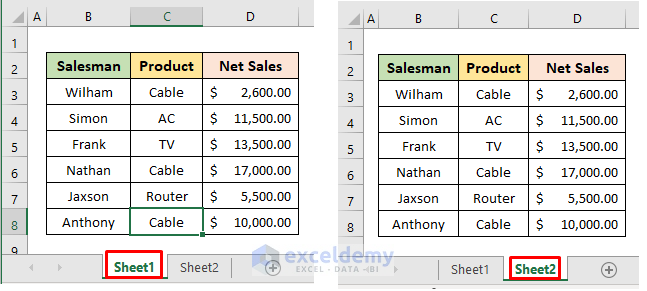
STEPS:
- Right-click on a sheet name.
- Select View Code.
- Copy the following code and paste it in the code box.
Sub FnD_All()
Dim sheet As Worksheet
Dim f As Variant
Dim r As Variant
f = "Cable"
r = "TV"
For Each sheet In ActiveWorkbook.Worksheets
sheet.Cells.Replace what:=f, Replacement:=r, _
LookAt:=xlPart, SearchOrder:=xlByRows, MatchCase:=False, _
SearchFormat:=False, ReplaceFormat:=False
Next sheet
End Sub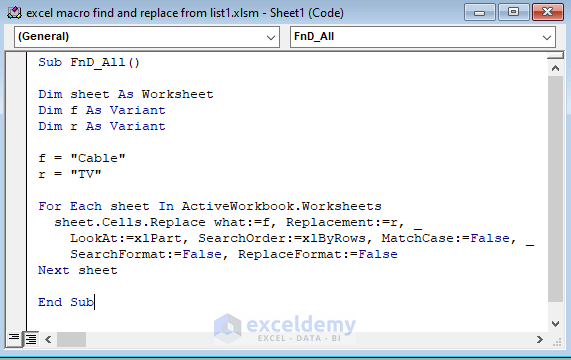
- Press F5 and close the VBA window.
- The product Cable has been replaced by the product TV in all the worksheets.
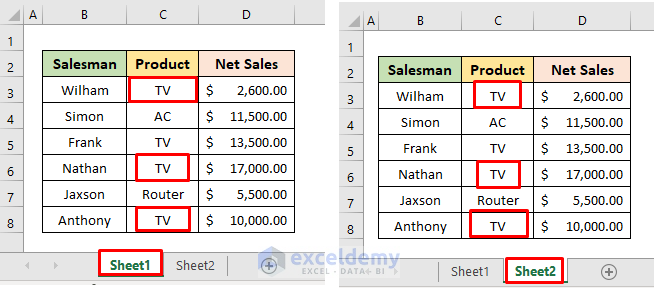
Download the Practice Workbook
Related Articles
- Excel VBA: How to Find and Replace Text in Word Document
- Find and Replace a Text in a Range with Excel VBA
- Excel VBA to Replace Blank Cells with Text
- Excel VBA: Replace Character in String by Position
- Excel VBA: How to Replace Text in String



This is helpful, but missing the last example, which would naturally be using VBA to Find and Replace Multiple Values from List All Throughout Entire Workbook in Excel.
Thank you Michael for your comment. We made adjustments in the Excel file. Please find the added VBA code for the last example you mentioned.
Regards,
Aung